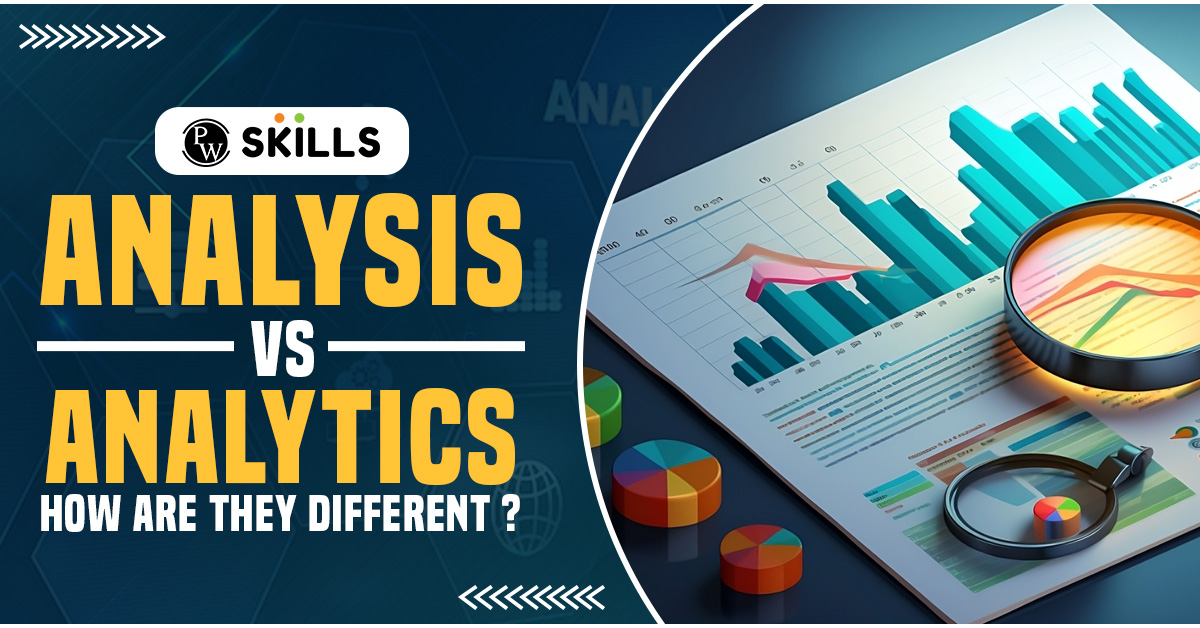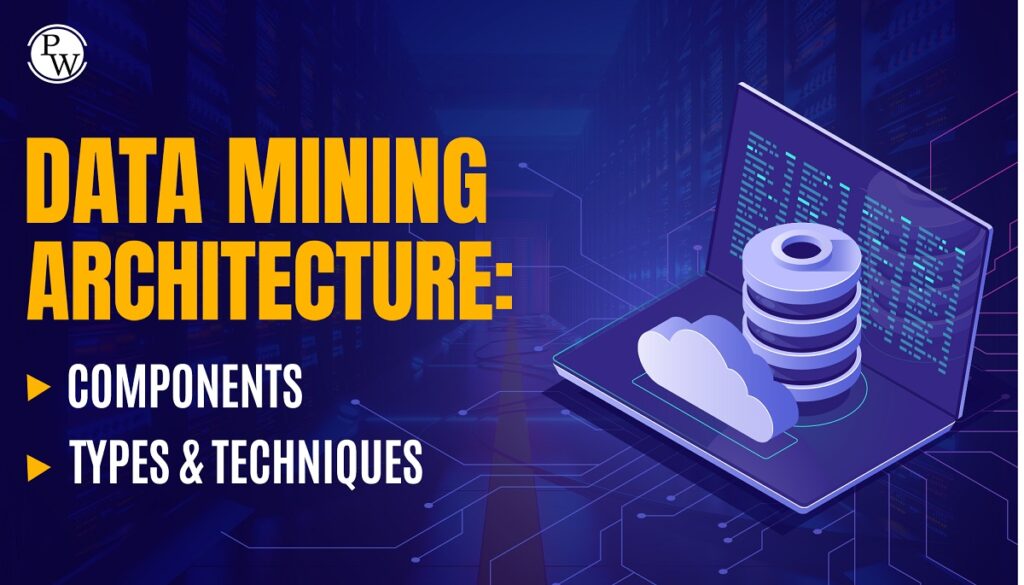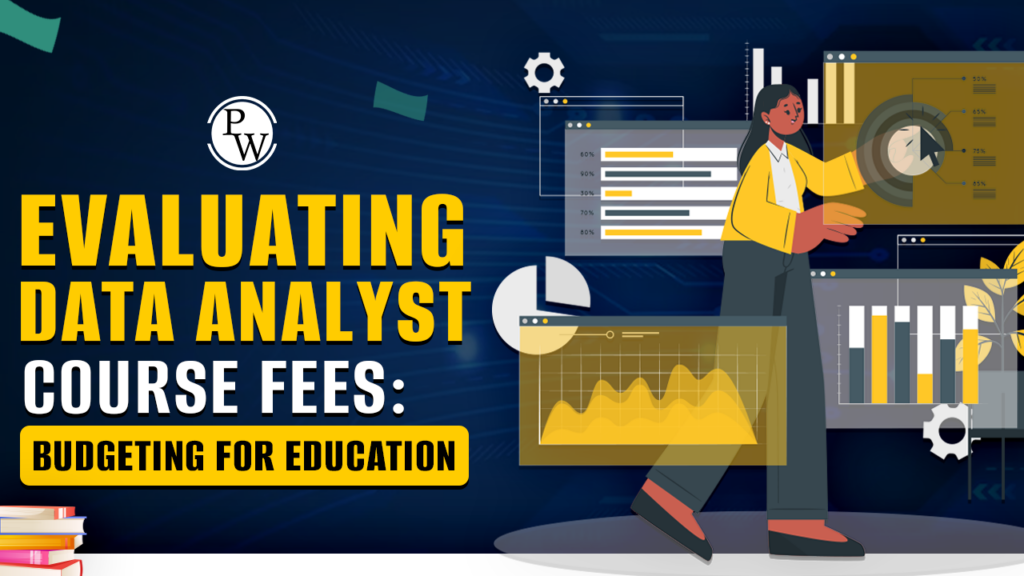Difference Between Data Analysis and Data Analytics: There’s a lot of confusion about the difference between data analysis and data analytics. Even though they sound similar, they have different definitions. Because of the word similarity, some folks think they mean the same thing and use them interchangeably. Technically, this is not accurate; there’s a clear difference between the two.
Usually, there’s no agreement on which tasks specifically belong to analytics and which ones can’t be considered as analysis. This results in people mistakenly grouping the terms together. Moreover, roles such as a business analyst and data analyst are quite distinct, but people often mix them up. If you want to understand the distinctions between these job roles, you can explore our article on the differences in analytics positions.
In this article, we’ll clarify these two crucial terms and offer you precise definitions so that you can better differentiate between them.
If you’re looking to build a career in data analytics, then PhysicsWallah’s Data Analytics course is just what you need! Our course will teach you everything in detail that you need to succeed as a data analyst in your career. So, don’t wait! Use the coupon code “READER” and get exclusive discounts on all courses from PW Skills!
Difference Between Data Analysis and Data Analytics
The terms “data analysis” and “data analytics” are closely related but have nuanced distinctions in their scope and emphasis. Data analysis is a broader term encompassing the examination and interpretation of raw data to extract insights, identify trends, and make informed decisions. It involves the application of statistical and mathematical techniques to understand patterns and draw conclusions.
On the other hand, data analytics is a more specialised and advanced field within data analysis. It involves not only examining historical data but also using predictive modelling, machine learning, and advanced statistical methods to forecast future trends and outcomes. Data analytics places a greater emphasis on the application of algorithms and computational techniques to extract actionable insights and drive decision-making.
Data Analytics
Analytics involves transforming unprocessed information into specific actions by examining data assessments and perceptions within the framework of organisational problem-solving and decision-making. It is the identification and communication of meaningful patterns in data.
In information-rich domains, analytics relies on the combined use of statistics, computer programming, and operational research to assess performance. Analytics often leans towards visualising data to communicate insights. The goal of Data Analytics is to gain actionable insights leading to smarter decisions and improved business outcomes.
Data Analysis
It involves watching, changing, tidying, and shaping raw data to create useful information and draw profitable conclusions.
Check the table below for the detailed difference between data analysis and data analytics more details:
| Difference Between Data Analysis and Data Analytics | ||
| S.No. | Data Analytics | Data Analysis |
| 1. | It is explained as a conventional or generic type of analytics. | It is defined as a specialised form of analytics. |
| 2. | It involves various steps, such as gathering data and subsequently examining business information. | To handle data, initially, raw data is organised in a meaningful way, and then data cleaning and conversion are performed to obtain meaningful information from the raw data. |
| 3. | It aids decision-making through the analysis of business data. | It examines the data by concentrating on gaining insights into business data. |
| 4. | It employs different tools for handling data, like Tableau, Python, Excel, and so on. | It utilises various tools for examining data, such as Rapid Miner, Open Refine, Node XL, KNIME, and so forth. |
| 5. | This cannot undergo a descriptive analysis. | This can undergo a descriptive analysis. |
| 6. | With the assistance of this, anonymous connections can be discovered. | It is not possible to discover undisclosed connections using this. |
| 7. | It doesn’t involve inferential analysis. | It supports inferential analysis. |
What Is the Difference Between Analytics and Analysis?
Let’s begin with a basic difference of analysis versus analytics according to any English dictionary. As per Merriam Webster, analysis means breaking down a whole into smaller parts, and analytics is described as the scientific approach to logical analysis.
Analysis reflects on the past, relying on historical facts and figures. On the other hand, analytics focuses on shaping the future or foreseeing outcomes. Put simply, analysis rearranges existing information or data, while analytics utilises this analysed data to anticipate potential future events.
To comprehend the disparity between analysis and analytics, consider an instance involving an apparel brand. The business or brand owner examines sales data from the previous year to understand profit and sales trends based on seasons, months, and weeks. This examination of past events provides a thorough review of historical facts.
Key Difference between Data Analysis and Data Analytics
Data Analysis
Data analysis is a procedure that includes gathering, handling, and inspecting data to gain a thorough understanding. Data analytics involves taking the examined data and working on it in a meaningful and practical manner to make informed business decisions.
Analysing data supports the creation of a robust business plan by examining past information to understand what succeeded, what failed, and what was anticipated for a product or service. Businesses benefit from data analytics by harnessing the insights from previous data to discover new opportunities and plan for future strategies. This process aids in business expansion by minimising risks, lowering costs, and facilitating informed decision-making.
In data analysis, specialists examine historical data, dissect the bigger elements into smaller parts through statistical analysis, and formulate a conclusion with more profound and meaningful insights. Data analytics employs various factors and constructs predictive and efficient models to compete in a challenging marketplace.
Tools employed for data analysis include Open Refine, Rapid Miner, KNIME, Google Fusion Tables, Node XL, Wolfram Alpha, Tableau Public, and more. Tools utilised in data analytics comprise Python, Tableau Public, SAS, Apache Spark, Excel, and others.
Data Analytics
Data analytics has a broader scope and includes data analysis as a sub-component. The data analytics life cycle also involves data analysis as a significant step.
Data Analytics and data analysis, both are essential to understand the data as the first one is useful in estimating future demands and the second one is necessary for gaining insight by analysing the details of past data. Data analysis is actually studying past data to understand ‘what happened?’ Whereas data analytics predicts ‘what will happen next or what is going to be next?’
The difference between business analysis and analytics is somewhat akin, as mentioned earlier in the data analytics vs. analysis section. Business analysis involves recognizing business needs and proposing solutions to business problems, while business analytics involves examining previous business performance through tools, techniques, and skills to forecast future business performance. To put it simply, business analytics operates on data and statistical analysis.
Also Read: Learning Path to Become a Data Analyst in 2024
What Is the Difference Between Business Analysis and Analytics?
Both business analysis and business analytics play important roles in making informed decisions within an organisation, but they have different functions.
| What Is the Difference Between Business Analysis and Analytics? | ||
| Factors | Business Analysis | Business Analytics |
| Purpose | Identify business needs and find solutions, concerning process improvement, strategic planning, or system development. | Use past data to generate insights, predict future trends, and guide strategic decision-making, and gain a competitive edge. |
| Data Usage | Data is often specific to the organisation’s operations, stakeholders, and industry. | Data from diverse datasets, focusing on the analysis, interpretation, and prediction based on data. |
| Tools and techniques | SWOT analysis, business process modelling, and requirements elicitation. | Statistical and quantitative analysis, explanatory and predictive modelling, and fact-based management. |
| Outputs | Actionable solutions that help the business align with its strategic objectives and improve processes. | Insights, predictions, and recommendations that can guide strategic decision-making. |
What Is the Difference Between Data and Analytics?
Here are some of the primary differences between data and analytics:
Data
- Data is the information you obtain from users, such as demographic info, behaviour, and activity.
- We have access to more data than ever before. In fact, more data has been created in recent years than in the entire history of the human race, and it’s only set to increase
- With so many ways to connect to and access the internet, data collection and storage has become increasingly challenging. Big data is the new norm as businesses collect user data across a multitude of channels including apps, email, and web browsing.
- Despite this overwhelming multitude of data, without cleansing and deduplicating the data, it’s extremely difficult to make any sense of it.
- In many ways, you can think of the relationship between data, analytics, and insights as you might think of an impressionist painting. If you were to stand directly in front of an impressionist painting (such as The Cliff of Aval Etretat by Claude Monet) at only a foot or so away, you would likely only be able to see thousands upon thousands of dots, smears, or marks that do not make any discernible shape.
- You can think of these dots as your data – there’s tons of them all around you, but individually your data points don’t provide much meaning.
Analytics
- Analytics is the discovery of patterns and trends gleaned from your data.
- Data is fundamentally useless without analytics. Analytics is how you make sense of your data and uncover meaningful trends. There is tremendous value buried in those massive data sets, but apps and other businesses are unable to unlock that value without the help of analytics.
- For a mobile app, your data might tell you that you sent 14,000 push messages last month. That data alone doesn’t mean much, but an analytics tool could dive deeper into that data and reveal that your ap
- p sent 3.7 messages per user, with an open rate of 20%. This transforms your data and gives you the first glimpse into the effectiveness of your mobile app marketing.
- Going back to our painting analogy, analytics is what you see when you step back several yards from that impressionist painting. Stepping back, you’ll suddenly be able to see figures and forms that you could not see when standing closer to the painting. Only when you apply distance will the painting “make sense,” and similarly, analytics is what provides the bird’s eye view into making sense of your data.
Also Read: AI and Predictive Analytics: Examples, Tools, Uses, Ai Vs Predictive Analytics
What Is the Difference Between Analytical and Analytic?
“Analytical” and “analytic” are often used interchangeably, but there is a subtle difference in their usage.
“Analytical” is an adjective that describes the ability to analyse or understand complex issues by breaking them down into smaller components. It is commonly used to refer to a person’s cognitive or problem-solving skills. For example, someone with strong analytical skills can effectively examine and interpret data, identify patterns, and draw meaningful conclusions.
On the other hand, “analytic” is also an adjective but is more commonly used in a technical or
scientific context to describe methods, processes, or tools related to analysis. It pertains to the systematic study or examination of something, often involving the use of mathematical or statistical techniques. For instance, analytic methods in chemistry may involve the separation and identification of components in a substance.
For Latest Tech Related Information, Join Our Official Free Telegram Group : PW Skills Telegram Group
Difference Between Data Analysis and Data Analytics FAQs
What is the primary focus of Data Analysis compared to Data Analytics?
Data Analysis primarily concentrates on inspecting and interpreting historical data patterns, while Data Analytics encompasses a broader range, incorporating predictive and prescriptive analysis for future-oriented decision-making.
How do the techniques differ between Data Analysis and Data Analytics?
Data Analysis typically employs statistical methods to uncover patterns, whereas Data Analytics utilises advanced tools such as machine learning algorithms, data mining, and statistical models for a more comprehensive and forward-looking analysis.
What distinguishes the time horizons of Data Analysis and Data Analytics?
Data Analysis is often retrospective, dealing with historical data, while Data Analytics is future-oriented, aiming to predict trends and support proactive decision-making.
In what ways do Data Analysis and Data Analytics contribute to business applications?
Data Analysis is commonly used for generating reports and gaining insights, while Data Analytics is applied strategically for planning, risk management, and optimising processes by harnessing predictive insights from diverse data sources.
How do Data Analysis and Data Analytics differ in their overall approach to data processing?
Data Analysis involves inspecting, cleaning, and transforming raw data into valuable insights. In contrast, Data Analytics covers a more extensive process, including examining, cleaning, modelling, and interpreting data, with a focus on deriving actionable insights for informed decision-making.





